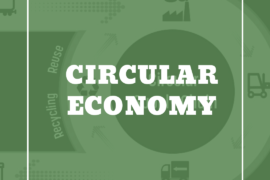One of the most important topics within any SAP project is testing.
The tests will determine the success of the project in addition to the quality of delivery.
It is simply impossible for a project to be delivered without proper planning for this activity.
Companies that save in this phase, usually have great headaches after the end of their projects and that is precisely why we are going to talk today about the main phases of testing within any SAP project.
Unit Tests
Unit tests are usually performed by the consultants themselves within a project.
The environment used is that of Development and its main purpose is to carry out a more coarse test of the solution.
The biggest difficulties of this type of test are:
- Poor quality of master data in the environment (companies generally don’t care much about loading master data in development environments).
- Environment instability (since all consultants use the same environment, the environment can often have many errors)
- Lack of knowledge of the process being tested (some consultants try to perform the most complete test possible within that environment, but due to lack of knowledge of the process in question, it can be quite difficult to perform the test).
This type of testing is carried out practically throughout the project, since, for each new solution created by the project team, tests are required in the development environment before the solution is transported to the quality environment.
The tip is to test, test and test.
Never save time on unit tests.
Integrated Tests
In this phase, the solutions are already well defined, tested, and have already been transported to the quality environment.
The main purpose of this phase is to ensure that the solution created works as a whole.
Integrated tests are most often carried out by the consultants themselves to ensure that the entire process is working.
Often the Key Users responsible for that particular process are involved in the test (recommended).
It is very important that before starting the next testing phase (UAT), all processes are tested in that phase.
In some projects I worked on, the integrated testing phase was short and few processes were tested.
This made it very stressful in the next testing phase.
User Acceptance Tests (UAT)
This is the most important testing phase of the project.
It’s because?
Because it is the last official testing phase before the entire solution is transported to the production environment.
These tests are also performed in the quality environment, and in addition to the processes, the master data is also tested in this phase, since they are loaded in their entirety (or as much as possible) in that environment.
Unlike the integrated tests, the key users are actually responsible for carrying out the tests here.
They are responsible for ensuring that all processes and data are working the way they really should.
It is highly recommended that a tool be used where all test scripts are loaded (one step by step for each process), their data variations (materials, suppliers, taxes, etc.), and also to carry out the control of all defects found.
A great tool is the HP Quality Center, widely used by the main companies in which I had the opportunity to work.
This testing phase is also usually the tensest phase of the project, as this is where the client will really have a vision of how the quality of the project is.
I have seen cases, where the second phase of UAT was requested, as the first was a disaster.
After the completion of the UAT and the approval of all tests by the Key Users, the solution is ready to be transported to production.
Regression Tests
Sometimes this type of testing is not performed.
In fact, many times.
Basically, after the solution is approved, tests are carried out to ensure that processes that previously worked were not affected by the new solution.
This is very important for global companies, where a rollout is being carried out in a country where the complexity is extremely high.
It may happen that, due to a legal requirement, a development is created for a sales process for that particular country, but by mistake, that development that should only be activated for a single country is activated globally and right after the solution is shipped for production, the sales order process is impacted globally, causing a lot of stress and wear (in addition to a terrible one for the project team).
Conclusion
I hope that the main types of test phases within an SAP project have become clear and that you have also understood how important it is to invest time in each phase.
If you have any suggestions (including subjects you would like to read about), feel free to send an email to sapsteps@sapsteps.com.
A big hug,
Bruno César



